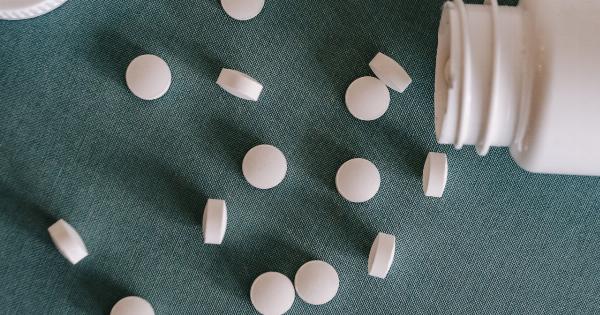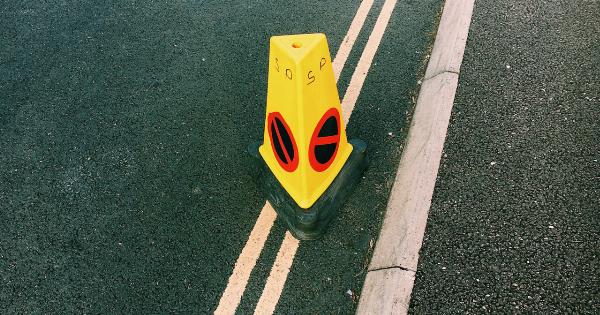Statins are a class of drugs commonly prescribed to lower cholesterol levels in individuals at risk of cardiovascular diseases.
While effective in reducing cholesterol, there has been ongoing debate and concern regarding the potential link between statin use and muscle pain. This article aims to explore the truth behind this association, separating fact from fiction.
What are Statins?
Statins are a group of medications primarily used to lower cholesterol levels in the bloodstream. They work by inhibiting an enzyme called HMG-CoA reductase, which is responsible for producing cholesterol in the liver.
By lowering cholesterol levels, statins help reduce the risk of cardiovascular diseases such as heart attacks and strokes.
The Link Between Statins and Muscle Pain
Reports of muscle pain associated with statin use have led to concerns and even discontinuation of the medication in some cases. The mechanism through which statins may cause muscle pain is not entirely clear, but there are a few theories.
1. Statin-Induced Myopathy
Myopathy refers to muscle diseases or disorders, and statin-induced myopathy describes muscle pain or weakness caused by statin use. This condition is relatively rare, affecting approximately 1 to 5% of statin users.
Several factors contribute to statin-induced myopathy, including individual susceptibility, concomitant drug interactions, and high statin dosage.
2. Coenzyme Q10 Depletion
Statins can potentially reduce the production of coenzyme Q10 (CoQ10), a naturally occurring antioxidant that plays a vital role in cellular energy production.
CoQ10 deficiency may lead to muscle pain, as muscles require sufficient energy to function properly. However, the link between statins, CoQ10 depletion, and muscle pain is not yet fully understood, and further research is required to establish a definitive connection.
3. Inflammatory Response
Some studies suggest that statins could trigger an inflammatory response within muscle cells, leading to pain and discomfort.
Inflammation may result from the interaction between statins and specific immune cells, causing muscle tissue damage and subsequent pain. However, more research is needed to fully understand this mechanism and its implications on statin users.
Identifying Statin-Induced Muscle Pain
It is essential to differentiate between muscle pain triggered by statins and other potential causes. Muscle pain can be a result of various factors, such as physical exertion, injury, or underlying medical conditions.
If you suspect statin-induced muscle pain, consider the following factors:.
1. Timing of Symptoms
Statin-related muscle pain typically develops within a few weeks or months after initiating statin therapy. If muscle pain occurs soon after starting the medication, it may be worth discussing with your healthcare provider.
2. Pattern of Pain
Statin-induced muscle pain often affects large muscle groups and can be symmetrical. Common areas of discomfort include the thighs, hips, shoulders, and lower back. If your muscle pain aligns with this pattern, it might be related to statin use.
3. Intensity and Persistence
Statin-related muscle pain tends to be moderate to severe and can interfere with daily activities. Additionally, the pain may persist even after a period of rest or discontinuation of physical activity.
Consulting a Healthcare Provider
If you suspect that your muscle pain is related to statin use, it is crucial to consult your healthcare provider. They will evaluate your symptoms, medical history, and may conduct blood tests to assess markers of muscle damage.
It is essential not to discontinue statins without proper medical guidance, as this can have serious consequences for your cardiovascular health.
Managing Statin-Induced Muscle Pain
If statin-induced muscle pain is confirmed, there are several strategies to manage this side effect:.
1. Adjusting Statin Dosage
Some individuals may experience muscle pain at higher statin doses. In such cases, reducing the dosage or switching to an alternative statin with a different potency may alleviate symptoms without compromising the cholesterol-lowering benefits.
2. Coenzyme Q10 Supplementation
Considering the potential link between statins and CoQ10 depletion, supplementation with CoQ10 has been explored as an adjunct therapy to mitigate muscle pain. However, further research is needed to determine its effectiveness and optimal dosage.
3. Exercise and Stretching
Engaging in regular exercise and incorporating stretching routines can help relieve muscle pain associated with statin use. Physical activity promotes blood flow to the muscles, reducing discomfort and aiding in recovery.
4. Evaluation of Other Medications
In some cases, statin-induced muscle pain may be exacerbated by the concurrent use of other medications. Your healthcare provider may review your medication regimen to identify any potential interactions or alternatives.
Conclusion
While statins are efficient in reducing cholesterol levels and mitigating the risk of cardiovascular diseases, the potential association with muscle pain should not be disregarded.
Understanding the mechanisms behind statin-induced muscle pain can help differentiate between fact and fiction. If you experience muscle pain while taking statins, consult your healthcare provider to determine the best course of action. Proper management and individualized approaches can help balance the benefits of statin therapy with potential side effects.





























